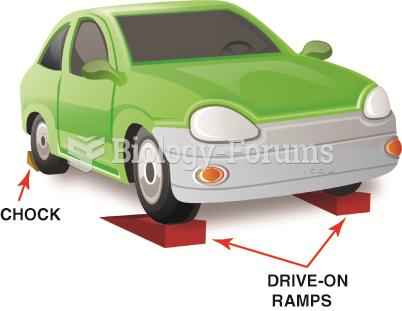|
|
|
Illicit drug use costs the United States approximately $181 billion every year.
The cure for trichomoniasis is easy as long as the patient does not drink alcoholic beverages for 24 hours. Just a single dose of medication is needed to rid the body of the disease. However, without proper precautions, an individual may contract the disease repeatedly. In fact, most people develop trichomoniasis again within three months of their last treatment.
Approximately 25% of all reported medication errors result from some kind of name confusion.
GI conditions that will keep you out of the U.S. armed services include ulcers, varices, fistulas, esophagitis, gastritis, congenital abnormalities, inflammatory bowel disease, enteritis, colitis, proctitis, duodenal diverticula, malabsorption syndromes, hepatitis, cirrhosis, cysts, abscesses, pancreatitis, polyps, certain hemorrhoids, splenomegaly, hernias, recent abdominal surgery, GI bypass or stomach stapling, and artificial GI openings.
Drugs are in development that may cure asthma and hay fever once and for all. They target leukotrienes, which are known to cause tightening of the air passages in the lungs and increase mucus productions in nasal passages.
 General Andrew Jackson, on the horse, exhorts his men to throw back the advancing British; they succ
General Andrew Jackson, on the horse, exhorts his men to throw back the advancing British; they succ
 Drive-on ramps are dangerous to use. The wheels on the ground level must be chocked (blocked) to ...
Drive-on ramps are dangerous to use. The wheels on the ground level must be chocked (blocked) to ...





